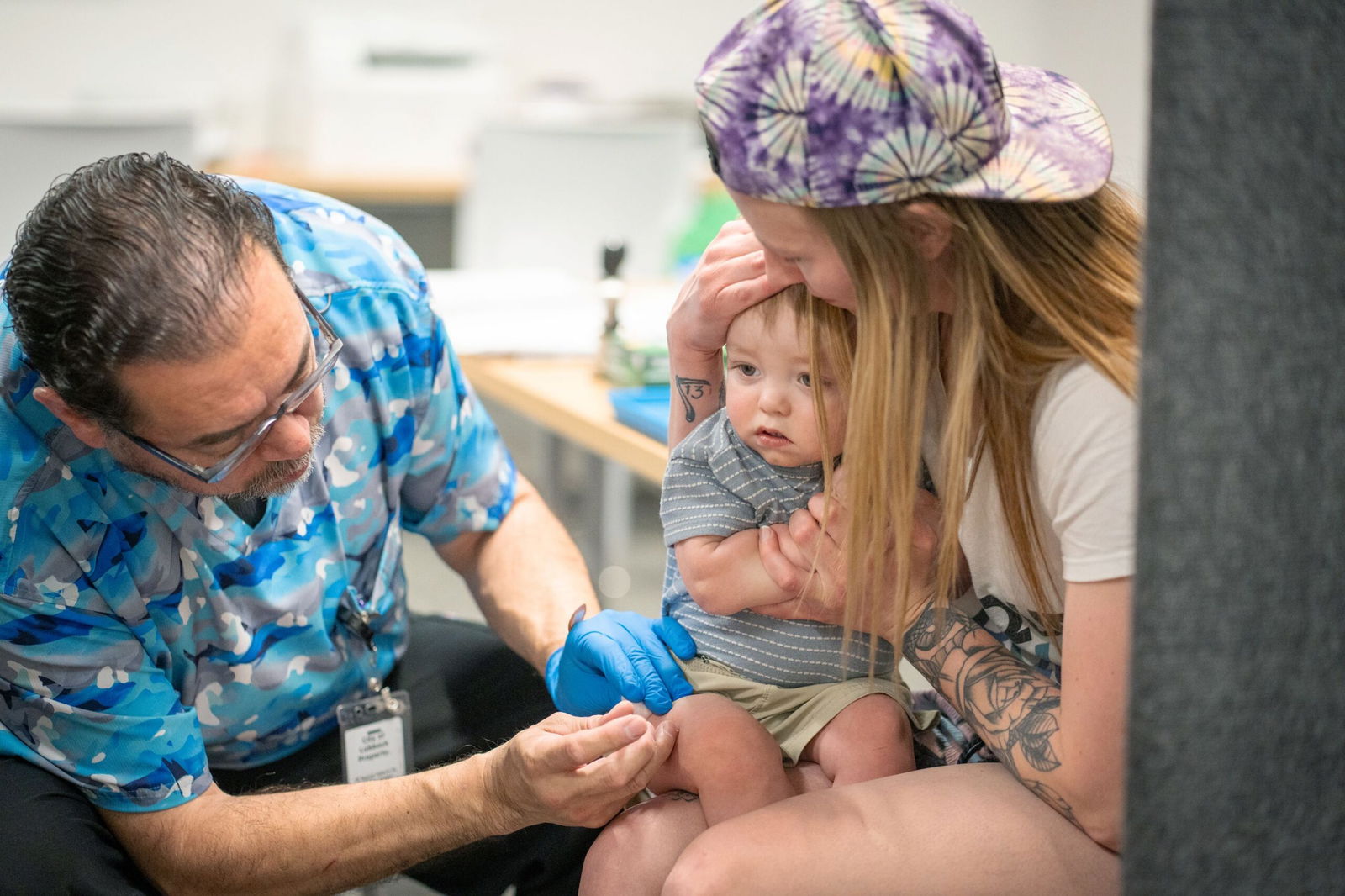Measles vaccination rate may be even lower than estimated, leaving kids vulnerable amid outbreak

According to a new report
By Deidre McPhillips and Neha Mukherjee, CNN
(CNN) — As the United States faces one of its worst measles outbreaks in decades, with at least 569 reported cases in multiple states, a new analysis finds that nearly a third of young children who were eligible to be vaccinated against the disease did not get their first shot on schedule.
Measles is an extremely contagious airborne disease that can be especially dangerous for young and unvaccinated children. The measles-mumps-rubella (MMR) vaccine is highly effective, with one shot offering 93% protection against measles and a second shot raising it to 97%. The first dose is recommended between 12 and 15 months of age and the second dose between ages 4 and 6.
In 2024, just 68.5% of children in the US had received their first dose by 15 months of age, according to a new report from Truveta, a health-care data and analytics company. This is a marked decline from 2020, when more than 77% of children had received their first shot by this age.
“The pool of children that could get really sick, could have severe complications and possibly die, has been bigger each year since Covid,” said Dr. Nina Masters, a senior research scientist at Truveta and former epidemiologist at the US Centers for Disease Control and Prevention. “Especially among these outbreaks, it’s just a very troubling thing to see in the data.”
The US Department of Health and Human Services has set a goal that at least 95% of children in kindergarten will have gotten two doses of the MMR vaccine, a threshold necessary to help prevent outbreaks of measles.
But leaving more than 30% of a particularly vulnerable population of young children without any protection from one dose creates unnecessary risk, experts say.
“Don’t delay, and particularly not now,” Dr. Ashish Jha, dean of the Brown University School of Public Health who was federal Covid-19 response coordinator in the Biden administration, advises parents.
At least 631 cases of measles have been reported in the US this year, according to a CNN tally. It’s only the third year with more than 500 cases since measles was declared eliminated in the country a quarter-century ago.
In Texas, the epicenter of the current outbreak, about a third of all reported cases have been among children younger than 5, according to data from the state health department. Nearly all were unvaccinated.
“Once you get below 95% [vaccination], the ability of that virus to start circulating in the community goes up substantially,” Jha said. “Even small decreases in the percentage of school-age kids being vaccinated could mean much bigger outbreaks in terms of the number of children who are involved.”
Undervaccinated pockets of the US create broader vulnerabilities, he said. When eligible children are not vaccinated, it creates a greater risk that the virus will reach those who are too young to be vaccinated.
“It’s essentially like dry timber waiting to be lit on fire,” Jha said. “What you have is just a lot of vulnerable communities around America. And I think we’re sort of playing Russian roulette here with these outbreaks, because obviously, people don’t stay local.”
An urban-rural divide
The new Truveta report also highlights the divide between vaccination rates for children in urban areas, where 75% of children had gotten a dose of MMR by 15 months of age, and rural areas, where only 65.5% of kids had gotten the shot.
The reasons for this disparity can be “divided into structural barriers and then vaccine hesitancy,” said Dr. Catherine Troisi, infectious disease epidemiologist with UTHealth Houston.
In rural areas, there might be fewer medical providers in general, and people may have to travel father to get vaccinated, she said.
Troisi said studies show that in rural areas, there are also more people who “may buy into some of the misinformation about immunizations.”
The Texas outbreak started in rural Gaines County, which now has 315 cases, according to the state health department, although experts say that is most likely a severe undercount.
Coverage with the MMR vaccine is particularly low in Gaines County, where nearly 1 in 5 incoming kindergartners in the 2023-24 school year had not gotten the shot. Some other counties affected by the outbreak – which now includes New Mexico, Oklahoma and possibly Kansas – also fall below the 95% vaccination benchmark.
Data on the outbreak shows that 58 people have been hospitalized, all of whom have not received the measles-mumps-rubella (MMR) vaccine or who have unknown vaccination status.
Most of the reported cases are in people under 18, and experts worry about increasing hospitalizations, especially in younger children who are at higher risk of complications.
“The more children who get the disease means that there’s an increased chance that there will be more children getting sicker with complications from measles,” said Dr. Christina Johns, a pediatric emergency physician at PM Pediatrics in Annapolis, Maryland.
One death has been reported in a school-age child in Texas, and a death in New Mexico remains under investigation.
Headed in the ‘wrong direction’
Another new report from Truveta found that in 2024 just 80.4% of children had received two doses of the MMR vaccine by the time they turned 6, far lower than CDC estimates, which put coverage at just under 93% for kindergartners in the 2023-24 school year.
The data analyses capture two different populations, and “likely the truth lies somewhere in the middle,” said Masters, who has studied measles for the past decade.
Truveta’s database captures electronic health records for nearly a third of the US population and covers nearly a fifth of daily clinical care across the country, but the findings from its analysis of people seeking more regular primary care may not be fully representative of nationwide trends.
But vaccination data from the CDC is an estimate too, based on surveys with varying representation, none of which would capture the growing share of children who are homeschooled.
Other recent research also suggests that MMR vaccine coverage may be lower than federal data says.
A survey of nearly 20,000 parents between mid-2023 and mid-2024 found that just 71.8% said their children had gotten at least one dose of MMR vaccine by age 5, according to a study published last month in the American Journal of Public Health.
Although each analysis might differ in its approach, the consistent finding of declining vaccination rates is the most consequential takeaway, Masters said.
“Every analysis, every outbreak, always has the same conclusion that you end outbreaks with rapid, prompt mass vaccination. That’s how you bring outbreaks under control,” she said. “We’re going in the wrong direction. We’re not getting close to bringing this under control, and we’re exposing a situation where there are more kids who are at risk instead of fewer.”
The-CNN-Wire
™ & © 2025 Cable News Network, Inc., a Warner Bros. Discovery Company. All rights reserved.

